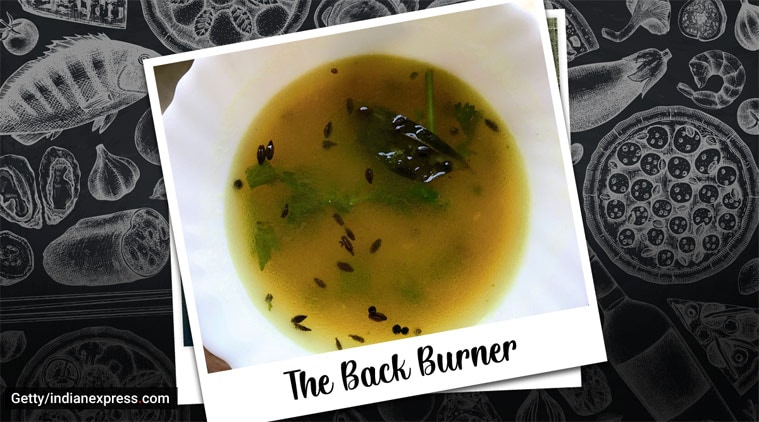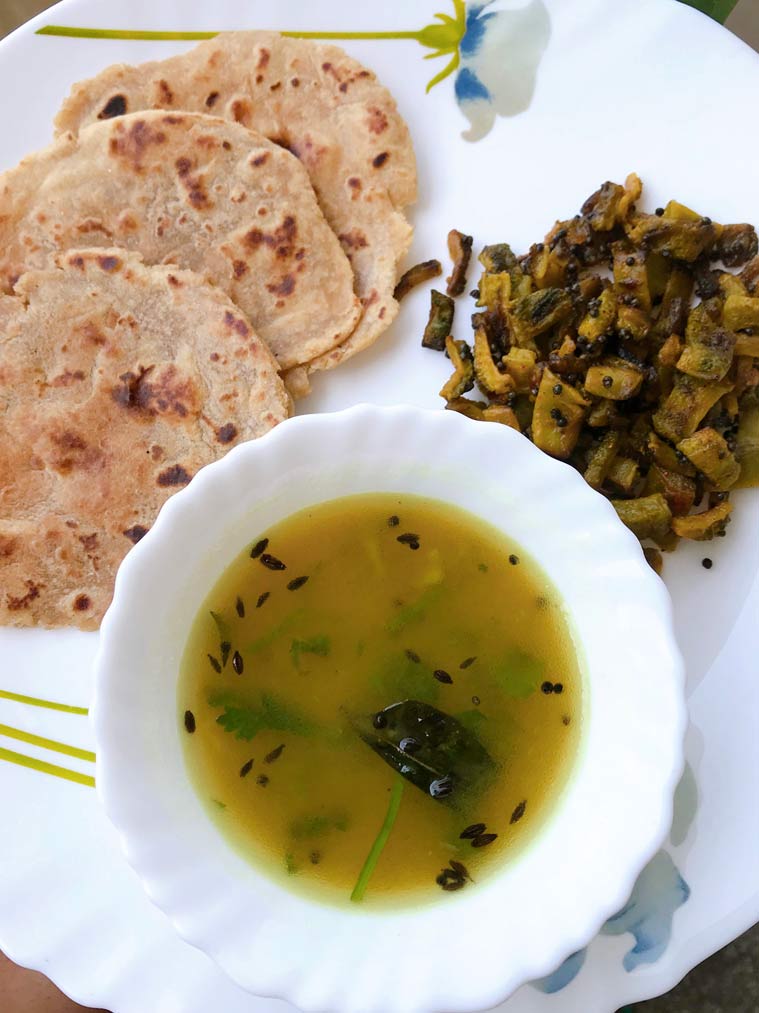 The Gujarati Khatti Meethi Dal is thinner than most other kinds of dals and has a nice balance of sweet and sour (Source: Pooja Pillai)
The Gujarati Khatti Meethi Dal is thinner than most other kinds of dals and has a nice balance of sweet and sour (Source: Pooja Pillai)
I grew up in Gujarat, so while I do take great comfort in eating food as made by my mother, I also find solace in eating food that reminds me what was made by other loving hands when I was a child. One of our neighbours, a Gujarati homemaker, who would babysit me until my mother got back from work, made a khatti meethi dal everyday and, as I ate lunch in her house everyday, I grew to love it. It was tasty when eaten with her thin rotlis and whatever the dry shaak (subzi) of the day was, but it was especially good when simply eaten with some hot rice.
I realised much later that I was the rare non-Gujarati to unabashedly love this dal. But I also understood why lots of people don’t; when encountered in one of those Gujarati thali restaurants, which is where most non-Gujaratis have it for the first time, the Gujarati khatti-meethi dal is simply a meethi dal. It bludgeons you with sweetness, with the sugar elbowing out the flavours of all the other ingredients. Most of us grow up expecting dal, however it is made, to be spicy or garlicky or even sour, but never sweet. So when it starts to taste like dessert, an instinctive revulsion kicks in.
Read| The Back Burner: The beautiful, complex flavours of roasted coconut
Made properly, however, this dal is a delicate balancing act, a simple dish that is, like so many other simple dishes, an excellent test of your judgement as a cook. It’s sweet, yes, thanks to sugar or jaggery, but it’s also got a bright tartness that comes from lime juice or tamarind (or even kokum). Ginger and green chillies add their own unique heat to it, as do cinnamon and cloves (if used). Coriander leaves add a burst of freshness and peanuts add some texture to the smooth, watery broth made of cooked and mashed toor dal (pigeon pea).
 Khatti Meethi Dal with Gujarati bhakris and a simple karela (bitter gourd) subzi (Source: Pooja Pillai)
Khatti Meethi Dal with Gujarati bhakris and a simple karela (bitter gourd) subzi (Source: Pooja Pillai)
Read| The Back Burner: You must try this quick and easy raw mango poha
Recipe:
1 cup toor dal
¼ cup raw peanuts
2-3 green chillies, minced
½ inch piece of ginger, ground to a paste
¼ cup Jaggery or sugar – adjust this according to taste
Juice from 1 lime – can be replaced with tamarind or kokum water. Adjust according to taste
Fresh coriander leaves, chopped fine
A pinch of turmeric
Salt, to taste
Aromatics for tempering:
½ tsp Mustard seeds
½ tsp cumin seeds
¼ tsp fenugreek seeds
A pinch of asafoetida
1 sprig of fresh curry leaves
½ inch stick of cinnamon (optional)
3-4 cloves (optional)
Read| The Back Burner: A simple sadhya and a start
Method:
Cook the toor dal with some turmeric in a pressure cooker. It should become soft because once you’ve opened the cooker, you’ll need to mash it into a paste. Then add some more water to get a brothy consistency (since this dal is thinner than most other kinds of dal), add the peanuts, green chillies, ginger and some salt and, on a high flame, bring it to a boil. Reduce the flame and let it simmer until the peanuts are cooked. Then add jaggery (or sugar) and stir to dissolve. If you’re using kokum or tamarind water, add it now and bring to a boil, then switch off the flame. If you’re using lime juice, add it only at the end after turning off the flame.
Temper the aromatics and add them to the dal, followed by fresh coriander leaves and lime juice (if using).
Remember to keep tasting the dal as you go and adjusting the proportion of sweet and sour (even salt) to find the right balance.